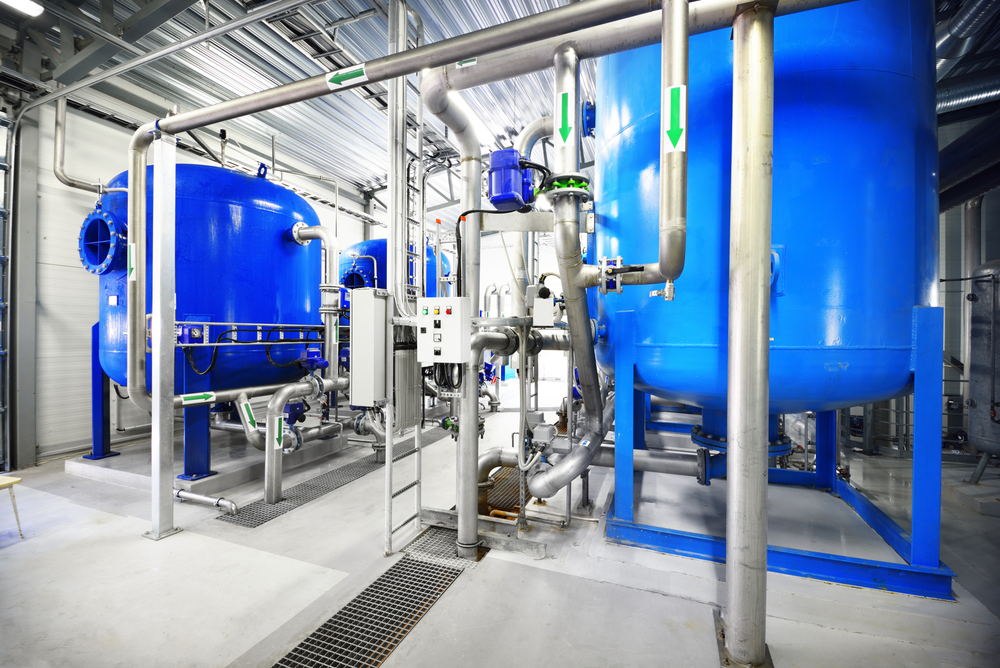Reverse osmosis systems are prone to build-ups, such as suspended solids, microbial and biofilm, and silica. They need to be cleaned regularly to ensure optimum filtration results and to prolong the life of the system.
In this article Mark Ligon, Marketing Manager at Commercial Filtration Supply, provides some helpful insight into caring for reverse osmosis filtration systems.
Commercial Filtration Supply is a provider of industrial filtration products at discount prices, and Mark believes educating customers on liquid filtration best-practices ensures they have the best experience possible with the product.
What is reverse osmosis?
Reverse osmosis is the removal of contaminants from feed water or unfiltered water using pressure to force it through a semipermeable membrane. Water flows from a more concentrated side of the reverse osmosis (RO) membrane, with more contaminants, to the less concentrated side, with fewer contaminants.
The filtered, fresh water is called the permeate. The leftover water with a high concentration of contaminants is called brine or waste. The filtered water is very safe, even suitable for use as drinking water.
The RO membrane contains tiny pores that block contaminants but allow water molecules to flow through. Therefore, the membrane blocks contaminants from moving to the less concentrated side to achieve equilibrium, which is the reverse of osmosis.
The stages of a reverse osmosis filtration system
An industrial reverse osmosis filtration system features several filters that remove contaminants to provide safe, fresh, and clean water. This system typically has the following stages:
Pre-Filter
The pre-filter protects fragile reverse osmosis membranes by filtering large sediments such as sand, silt, dirt, and other particles. It is prone to clogging, which can cause it to collapse, resulting in the particulates getting into the fragile RO membranes and destroying them.
This filter should be typically changed every six months.
Carbon Filter
The carbon filter removes some total organic carbon (TOC) and chlorine. It is advisable to conduct chlorine tests daily to confirm the carbon filter is functioning correctly. A build-up of chlorine can irreversibly damage the RO membrane.
RO Membrane
The RO membrane sits at the final phase of a reverse osmosis filtration system. Strong pressure pushes the water through the RO membrane, filtering contaminants on one side while allowing fresh water to go through on the other.
The RO membrane catches any contaminants that may have travelled down the stages. Water typically travels through the membrane at about two drops per second or 35 pounds per square inch.
How often you need to change the RO membrane will depend on your facility’s source water quality and use. However, they should be cleaned often and replaced every two to three years.
The types of build-up that can damage a reverse osmosis system
Reverse osmosis filtration systems are susceptible to the following types of build-up:
- Suspended solids
- Metals (iron, manganese, and aluminum)
- Hydrogen sulfide
- Silica
- Microbial and biofilm foulants
- Polymers
- Hydrocarbons
- Calcium carbonate (CaCO3) and calcium sulfate
Most of these build-ups lead to sustained pressure drop and reduced permeate flow. In the case of metals, when they oxidize with the RO membranes, the permeate flow will increase, but the salt rejection will be lower.
Hydrocarbon build-up usually results from human activity or ship spills.
Depending on the type of build-up, you can implement the following cleaning treatments:
- High pH chemicals: This solution is recommended for organics and biofouling.
- Low pH chemicals: This solution is recommended for inorganic colloidal fouling, sulfate scale, and carbonate.
- Low pH chemical and high pH chemical combination: This solution is recommended for a mix of organics and mineral scales. It’s best to start with the low pH chemical to remove the mineral scale, then a high pH chemical to remove the organics.
- Specific biocides or high pH chemicals: This solution is recommended for removing bacteria.
Consult a professional
Reverse osmosis water filtration systems lie at the heart of the water supply for most commercial facilities and processes. It’s important to keep a regular eye on the filtered water’s quality to ensure no significant build-up can destroy the whole system.
Contact a professional and learn what preventive maintenance schedule will suit your facility.




